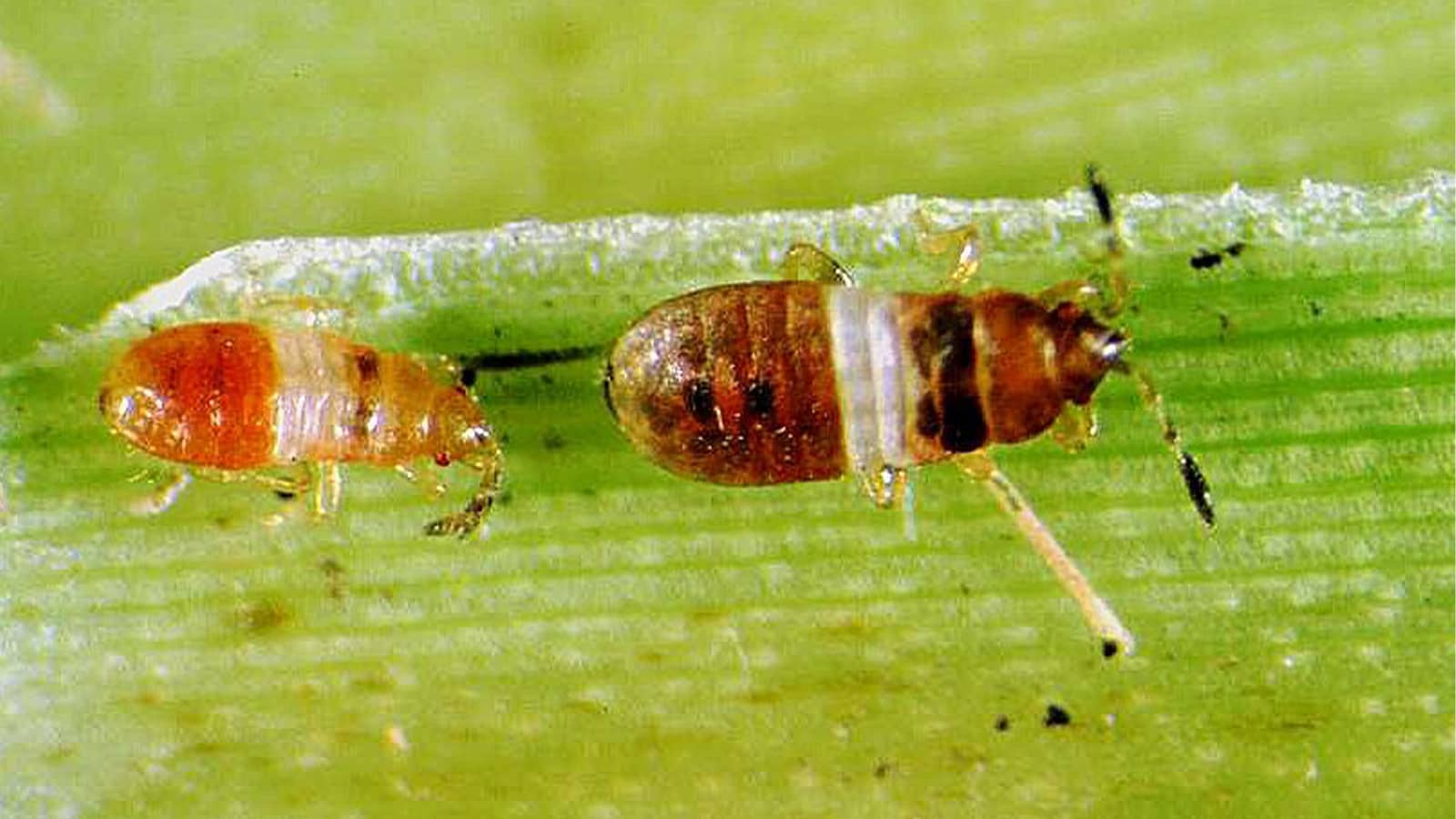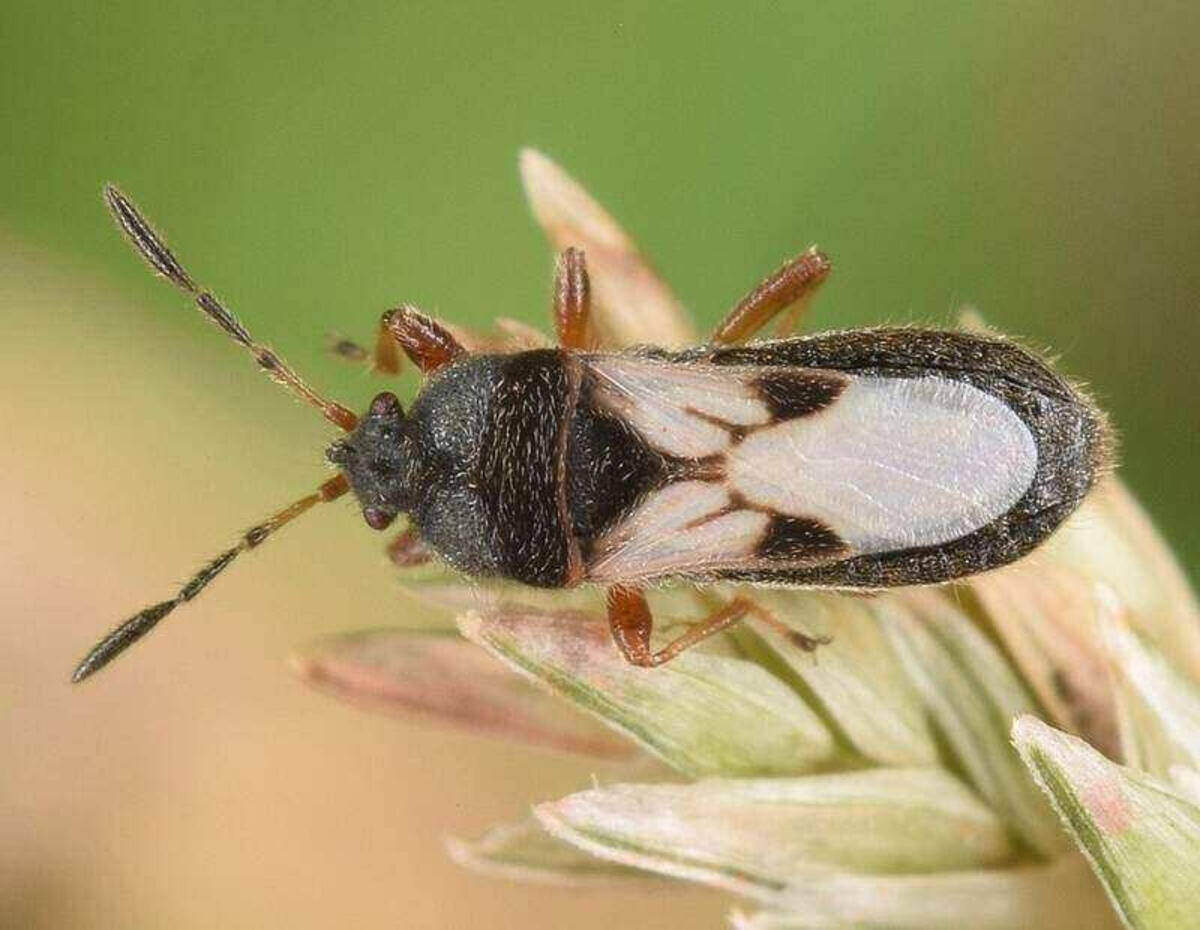Chinch Bug
Blissus leucopterus
|
|
|
Adult chinch bugs are black with whitish wings. Overall body length is slightly less than 1/8 inch. Immature bugs are reddish to blackish with a white band across the middle of the back. As nearby wheat fields mature and dry down, immense numbers of chinch bugs may migrate to adjacent corn fields. Migration takes place over the soil surface the immature bugs do not yet have functional wings. The bugs will congregate in large numbers near the base of plants, puncturing plant tissues withdrawing sap. Prolonged feeding will stress plants to the point they wilt and die. Although damage is usually confined to outer rows bordering the wheat, field-wide infestations may develop. Planting corn into standing small grain stubble may be risky if large numbers of chinch bugs were present in the previous crop. Chinch bugs usually increase in dry periods and decline during wetter years, which may reflect their susceptibility to Beauveria bassiana, a pathogenic fungus ubiquitous in the soil. Locally damaging infestations are more common in eastern Kansas but may occur also in parts of central Kansas. Growers should monitor for chinch bug activity each spring, especially when spring moisturehas been limited, and nearby wheat is thin and lacking in vigor. Seed treatments will help to suppress damage to seedling plants for about two weeks only.
Please refer to the most recent Corn Insect Management Guide for control options.
For more detailed information on chinch bug biology and management please refer to KSRE publication MF3107: Chinch Bug.
Page last updated 3/28/2024 by J.P. Michaud.
 Chinch bug nymphs.
Chinch bug nymphs. Chinch bug (Christina Butler).
Chinch bug (Christina Butler).